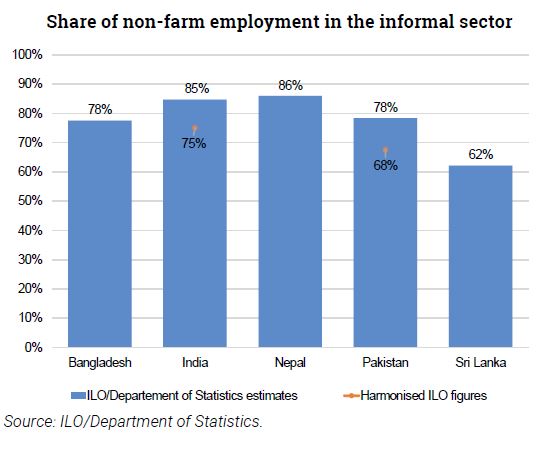Trésor-Economics No. 217 - The persistence of informal employment in the South Asian economies
Amongst major emerging regions, South Asia stands out in terms of the sheer size of the informal sector which is estimated to cover nearly 275 million non-farming jobs, or four out of five positions. If farming jobs are taken into account, its share rises to more than nine jobs in ten.
While familiar to labour economists, the phenomenon of informality remains difficult to quantify accurately and can be defined in a number of ways. It encompasses both the activity of undeclared companies and informal labour relations within the formal sector.
Although informal employment exists in most economic sectors, it is particularly prevalent in the least productive companies and occupational sectors. Therefore, the informal sector has a higher share in employment than in value creation.
The persistence of high informal employment in South Asia after several decades of strong growth is inconsistent with conventional development models, which predict that marginal returns to capital between the traditional and modern sectors would gradually even out.
This puzzle can be attributed to the combination of an early transition to the service sector, a lack of investment in public goods (human capital and infrastructure), and the poor functioning of the goods and factor markets. These factors help explain the duality of the labour market, which may have been increased by the opening up of these countries in the 1990s.
The extent of the informal sector poses considerable challenges in terms of long-term growth, fiscal policy and social protection. Its diversity, its socio-economic importance and its contribution to socio-economic stabilisation call for an in-depth examination of the structural determinants of formalisation rather than for a repressive approach.
